
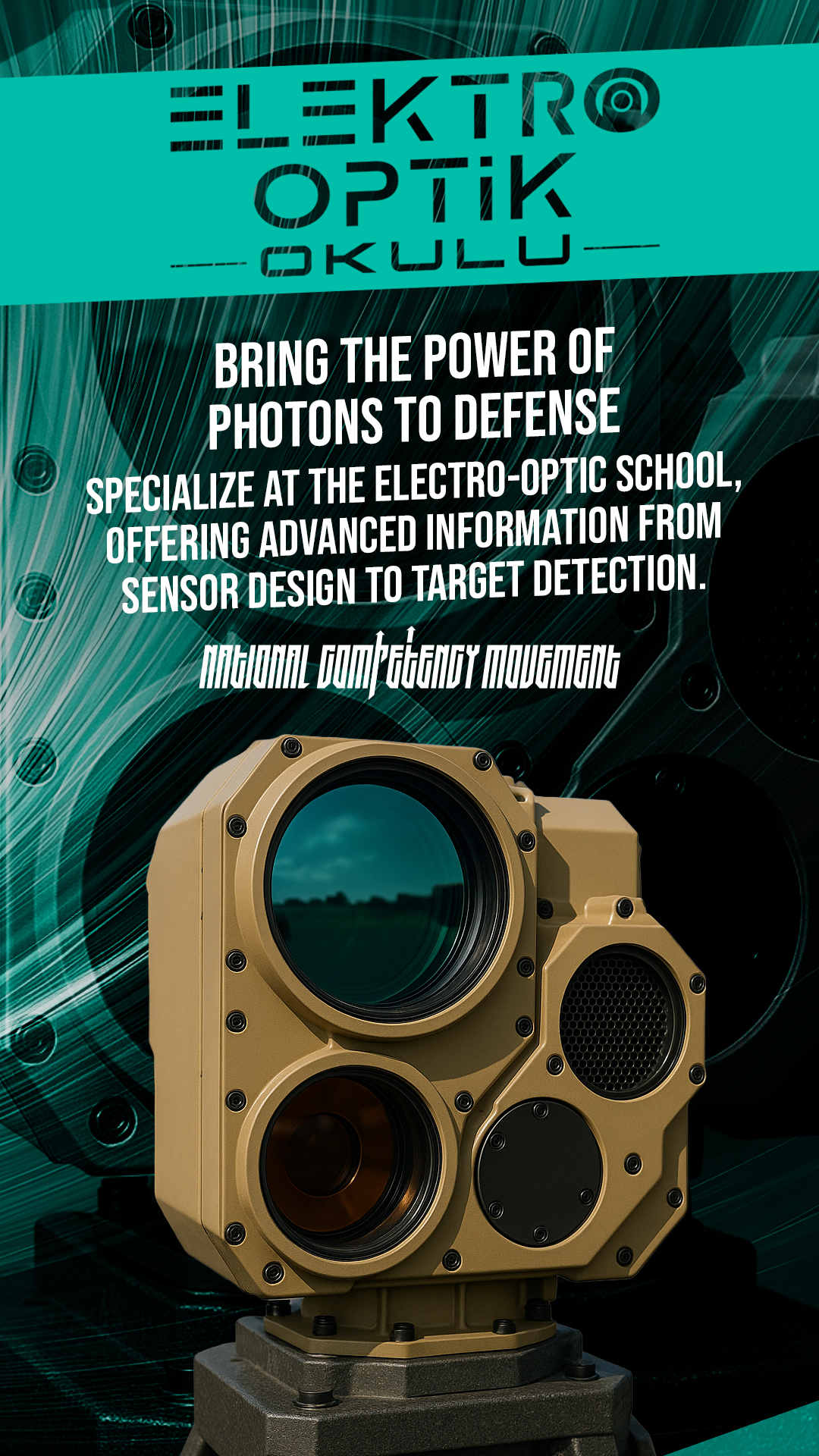
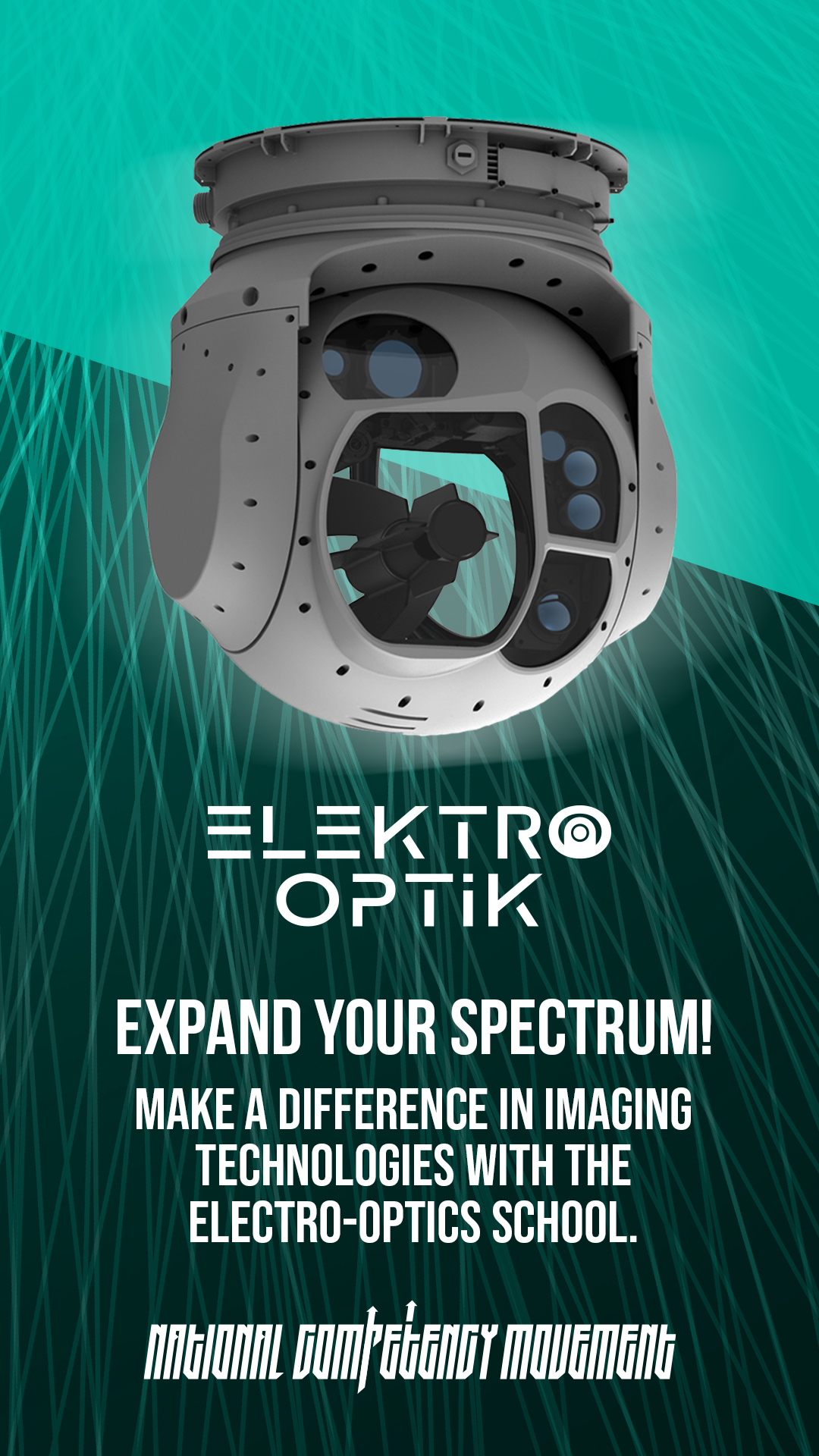
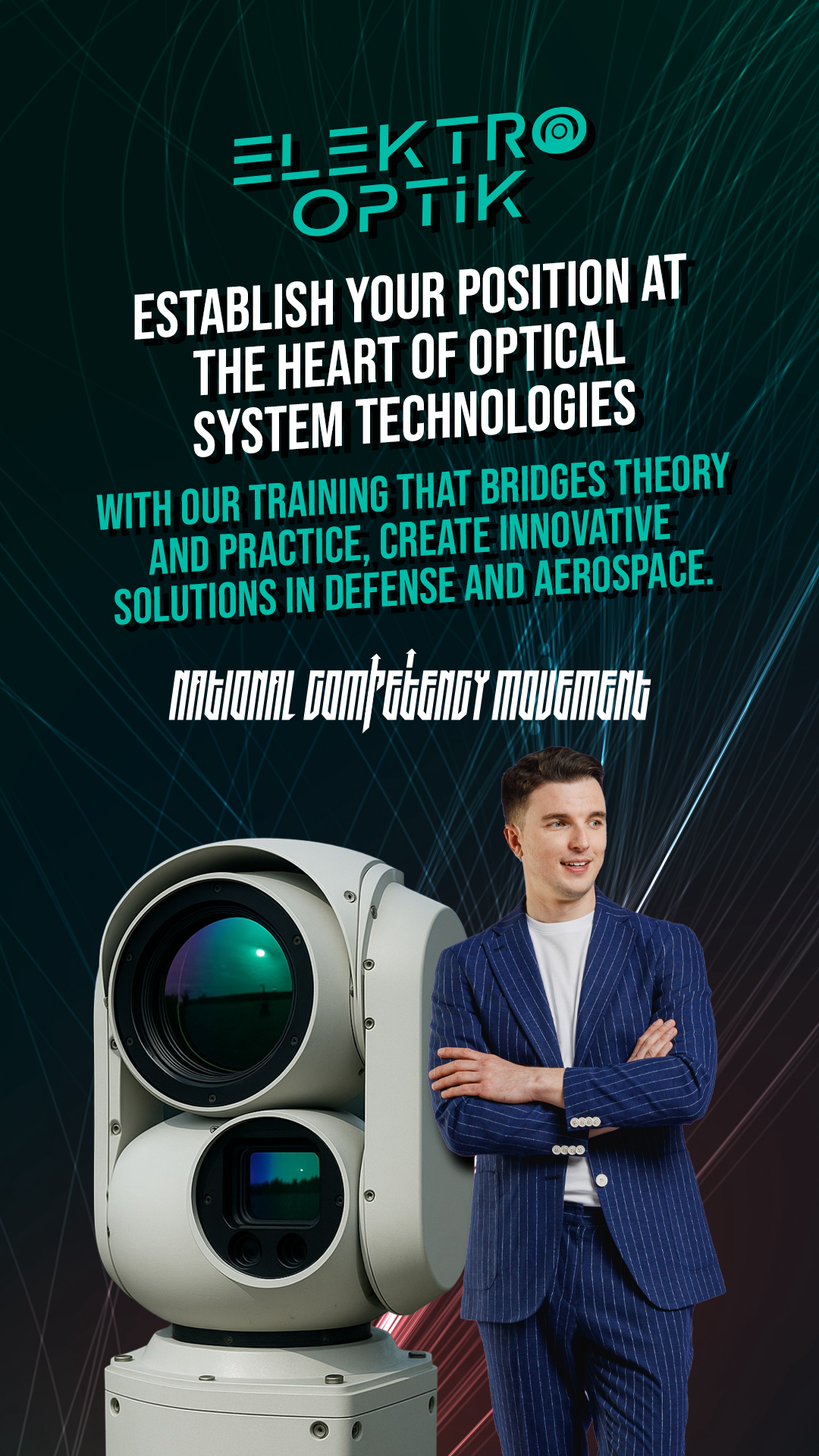

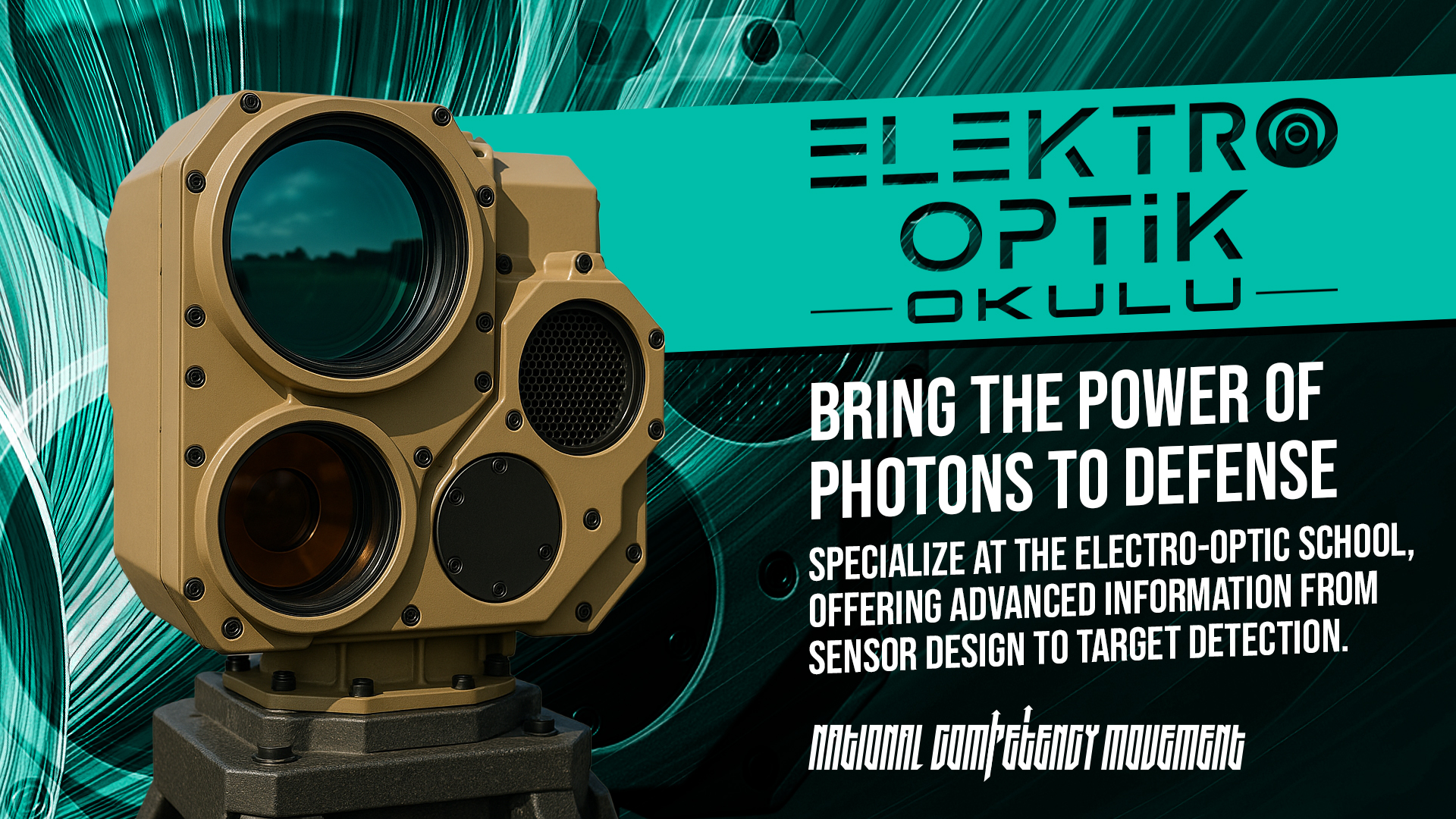
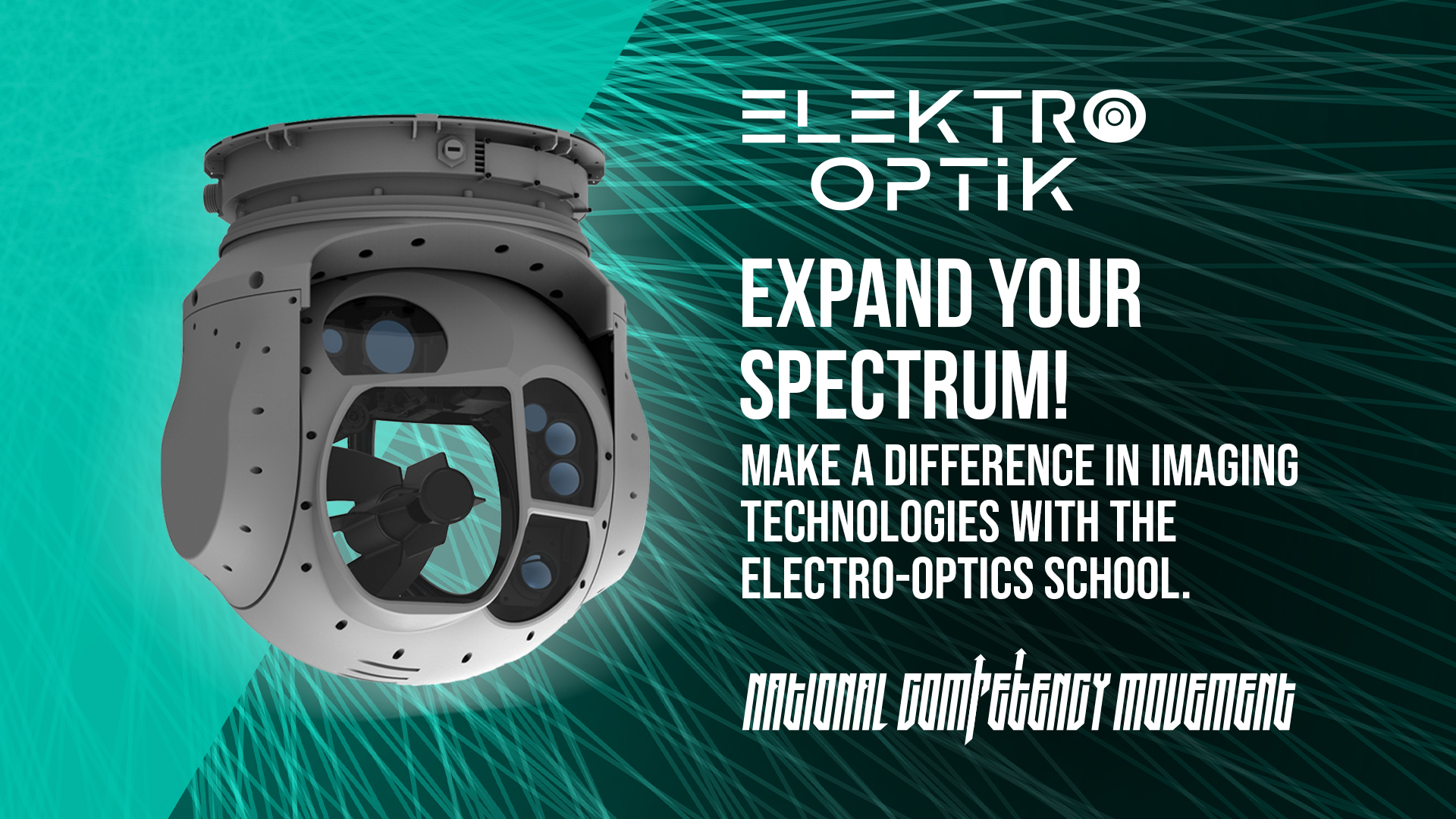
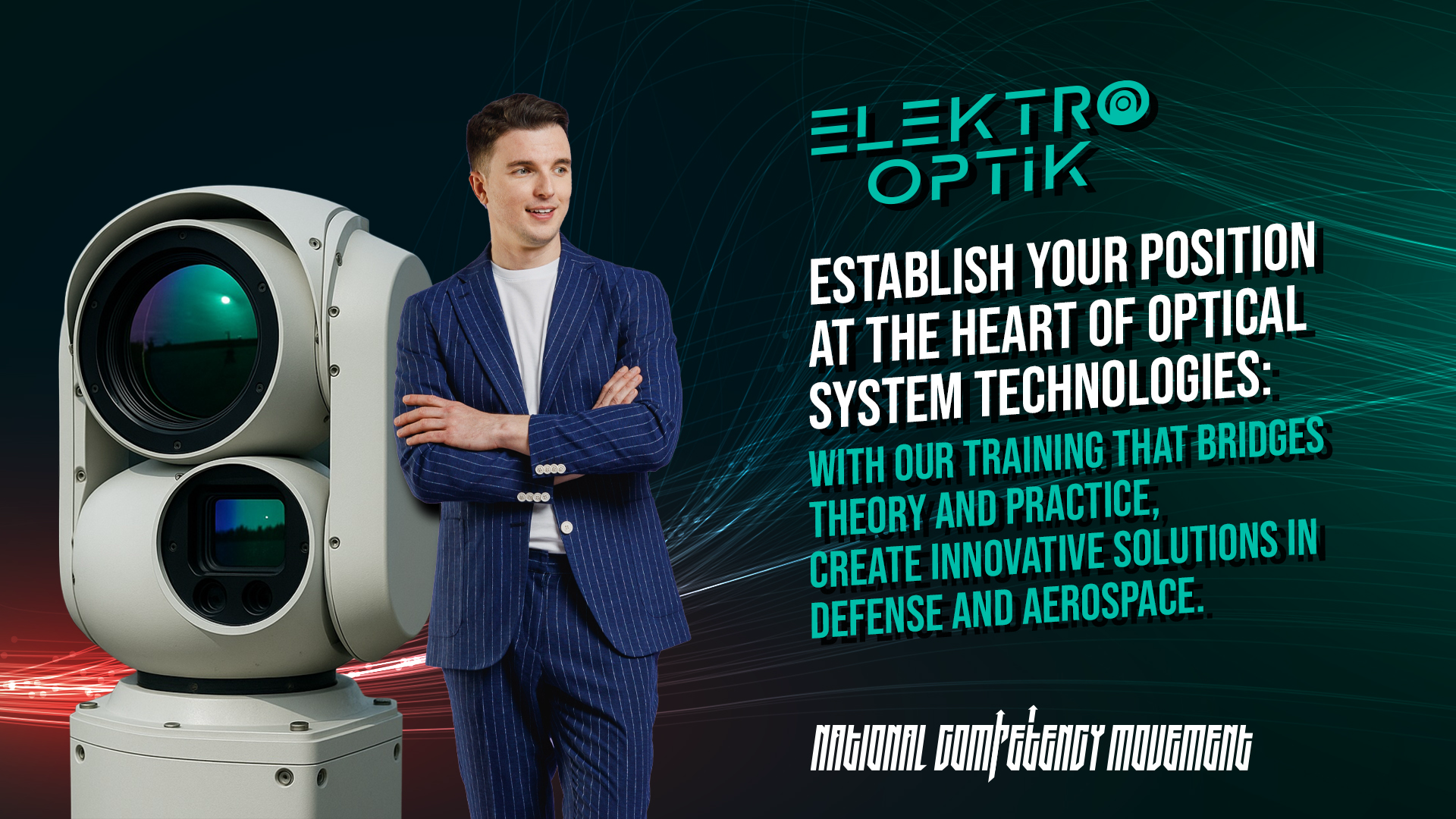
Optics is the branch of physics that studies the behavior and properties of light, its interaction with materials, and the devices used to detect it. It spans the visible, ultraviolet and infrared regions, and—viewing light as an electromagnetic wave—shares principles with X-rays, microwaves and radio. From endoscopes and microscopes in healthcare to night-vision and thermal cameras in defense, optical design and thin-film coatings are critical subfields. Optics is inherently multidisciplinary, drawing on physics, electronics, mechanical engineering and materials science.
The Electro-Optics School aims to equip participants with foundational and specialized knowledge in key areas—optical design, optomechanics, thin-film coatings, imaging technologies and system engineering—to balance understanding across defense stakeholders and cultivate the next generation of sector experts.
As part of the Electro-Optics School, the training content—covering both theoretical knowledge and practical applications—has been developed by experienced professionals with academic backgrounds and industry expertise. The training covers core electro-optical topics such as optical design, optomechanical design, optical thin film coating, sensor technologies, and imaging technologies, as well as optical system engineering. The content is enriched with case studies and real-world examples from the industry.
Designed for all professionals engaged in defense-related electro-optics projects. From entry-level modules for newcomers to advanced courses for specialists, our school serves project teams, procurement authorities, public-sector stakeholders and recent graduates—aligning competencies across the ecosystem.
Courses are crafted and delivered with industry leaders. The Expert Advisory Board shapes our vision, ensures relevance, and guides continuous content evolution to meet emerging defense-sector needs.
The EAB provides feedback and recommendations on:
Coordinators handle:
You can create a preliminary request for an existing course by selecting it from the "Courses" list and filling in the relevant sections under the "Request" tab.
You can create a preliminary request for an existing course by selecting it from the "Courses" list and filling in the relevant sections under the "Request" tab.
If the course you need is not in the existing list or requires customization, you can submit the course content, location, and preferred instructor (if any) here.
If the course you need is not in the existing list or requires customization, you can submit the course content, location, and preferred instructor (if any) here.

Selçuk Özer

Özgür Karcı
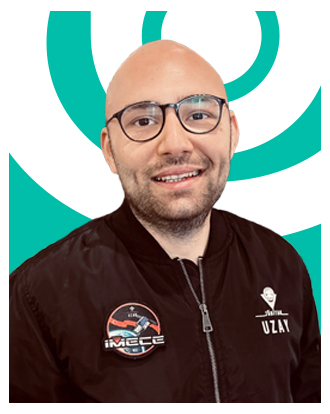
Kaan Kalkan

Devrim Anıl
Familiarise yourself with EO basics – light, lasers, detectors, optics, performance metrics, electronics and image‑processing fundamentals.
This course explains fundamental concepts of electro‑optical (EO) systems. Participants learn the basic components, their operating principles and real‑world applications.
Theoretical lectures using whiteboard, projector & computer demos (MS Office) in a classroom environment.
Basic knowledge of electronics and physics.
Learn IR‑imaging basics – blackbody radiation, detector technologies, optics, electronics and the software pipeline.
This course covers fundamental concepts of infrared (IR) imaging systems and explains the operating principles of all major components.
Theoretical lectures in a classroom using whiteboard, projector and MS Office tools.
Basic knowledge of electronics and physics.
Survey modern EO systems: reconnaissance, targeting pods, missile‑warning, IRST, night‑vision, lasers & countermeasures.
This course familiarises participants with modern EO systems used in defence and security, covering component fundamentals and real‑world applications.
Theoretical lecture in a classroom using whiteboard, projector & computer tools; includes Q&A.
Basic knowledge of electronics and physics.
Remote‑ & spectral‑sensing basics: EM theory, sensor systems, GIS integration, hyperspectral, radar, LiDAR and hands‑on processing with QGIS/OTB/SNAP.
This course provides basic knowledge of remote‑ and spectral‑sensing principles and systems. Participants learn RS concepts, EM radiation, sensor types, applications and process real RS & GIS data.
Theoretical lectures in a meeting‑room setting using whiteboard, projector, computer and MS Office tools.
Basic knowledge of electronics and physics.
Operating principles and components of visible, cooled/uncooled IR cameras and image‑intensifier devices.
Provides basic knowledge of working principles and components of day‑ and night‑vision cameras—including visible CCD/CMOS, cooled & uncooled IR and image‑intensifier technologies.
Theoretical lecture with whiteboard, projector, computer demos and MS Office tools.
Basic knowledge of electronics and physics.
Laser theory, classification, CW & pulsed uses—from range‑finding to high‑power defense, LIDAR, comms and safety.
Provides basic knowledge of laser principles, classifications and application areas—including range‑finding, LIDAR, communications, high‑power defense and safety.
Theoretical classroom lectures using whiteboard, projector, computer and MS Office.
Basic knowledge of electronics and physics.
This course explains fundamental concepts of photonic integrated circuits and quantum technologies. It introduces key on-chip components, working principles, and application areas, concluding with an overview of quantum technologies.
In this course, basic concepts related to photonic integrated circuits and quantum technologies will be explained. In this context, information about the basic components used in photonic integrated circuits will be given, and their working principles will be explained at a basic level. In addition, the application areas of photonic integrated circuits will be explained. Finally, an introduction to quantum technologies will be made.
This training will be given theoretically in a meeting or briefing room style classroom environment using whiteboard, projector, computer, MS Office tools.
To be a graduate of Electrical-Electronics Engineering or Physics Departments. Having taken the undergraduate level Electromagnetic Waves course.
Basics of optical systems: wavefront & rays, aberrations, ray tracing, special surfaces, glass choice, tolerancing and environmental effects.
This course provides a comprehensive introduction to optical design. Fundamentals of optical systems, refraction and reflection, image quality evaluation, special optical surfaces, overall design methodology, glass selection, environmental influences and detailed tolerancing are covered at an entry‑to‑intermediate level.
This training is delivered theoretically in a meeting/briefing‑room style classroom using a whiteboard, projector, computer and MS Office tools; optical‑design software demonstrations are included.
Basic knowledge of electro‑optics and physics.
Cover STOP analysis: FEA, surface errors, stress, thermal, vibration, mounts, adaptive optics, telescope case study.
This course introduces all essentials of optomechanical design: optical materials, surface defects, FEA‑based mirror modelling, coatings, mechanical stress and birefringence, thermo‑optical analysis, modelling of assembly interfaces, bonding, vibration, optical defects in dynamic environments, adaptive/active optics, interpolation, matrices, symmetry, assembly analysis, tolerancing, test support, system/state‑space analysis, structural optimisation – all reinforced with a detailed Cassegrain telescope example.
Theoretical delivery in a meeting/briefing‑room style classroom using whiteboard, projector, computer and MS Office tools; includes live demonstrations in FEA and optical‑design software.
Basic electro‑optical and finite‑element knowledge.
Comprehensive optical‑systems engineering: specs, OPD, beam optics, IR, diffractive, illumination, testing, tolerancing & manufacturability.
The training aims to inform the participants about optical‑system engineering. Topics include basic optics and system specifications; stops, pupils and related principles; diffraction, optical distortions and image quality; optical path difference (OPD) and mitigation of geometrical aberrations; glass (including plastics) and surface selections; design forms and processes; computer performance evaluation; Gaussian‑beam imaging; infrared imaging in MWIR (3–5 µm) & LWIR (8–12 µm); diffractive optics; illumination‑system design; performance evaluation & optical testing; tolerancing & producibility; optomechanical design; manufacturing considerations; polarization; thin‑film coatings; hardware issues; lens‑design optimisation case studies; optical‑sensor‑system modelling and analysis; stray‑light & optical scattering.
This training is delivered theoretically in a meeting/briefing‑room classroom using a whiteboard, projector, computer and MS Office tools; includes CAD and optical‑design software demonstrations and lab sessions.
Basic electro‑optical and finite‑element knowledge.
Detailed exploration of EO/IR imaging performance parameters, measurement methods, and environmental testing.
The course provides detailed information about the performance parameters of electro‑optical systems and their components, how to measure these parameters, and their impact on real‑world applications.
Theoretical lectures in a meeting/briefing‑room classroom using whiteboard, projector, computer and MS Office tools, plus hands‑on workshops on measurement and analysis tools.
EOTS01 (Introduction to EO Systems) or ≥ 4 years EO experience.
Fundamentals of infrared radiometry: propagation, units, material properties and calibration techniques.
The training explains the nature of infrared light, its propagation from source/target to sensor, radiometric parameters that quantify radiant energy, and calibration practices for electro‑optical systems.
Theoretical classroom delivery in a meeting/briefing‑room environment using whiteboard, projector, computer and MS Office tools.
Basic geometry and mathematics knowledge.
Advanced IR‑detector technologies: working principles, performance parameters, testing/characterization and manufacturing processes.
This course introduces advanced infrared‑detector technologies, evaluates the factors affecting detector performance, explains testing & characterization methods and outlines key manufacturing processes.
Theoretical lectures in a meeting/briefing‑room environment using whiteboard, projector, computer and MS Office tools; includes workshop exercises on test setups.
EOTS02 (Introduction to Infrared Imaging Systems) or intermediate physics & electronics knowledge.
Signal processing methods for EO/IR systems: filtering, enhancement, and reconstruction.
[Overview details to be added]
[Methodology details to be added]
[Prerequisites to be defined]
[Sources to be added]
Microfabrication for EO sensors: lithography, etching, thin‑film deposition, packaging, measurement & clean‑room infrastructure.
The course introduces fundamental microfabrication techniques used in EO detector production. Emphasis is on lithography (micro‑patterning) while covering the post‑lithography etching and thin‑film processes, required clean‑room infrastructure, equipment working principles and sample detector fabrication flows.
Theoretical sessions with whiteboard & projector plus hands‑on workshop modules in clean‑room / demo‑lab environments, enabling participants to practise selected microfabrication steps.
Basic knowledge of microfabrication and materials‑science principles.
In‑depth exploration of optical thin‑film coating techniques, deposition methods (PVD, CVD, solution‑based), hard coatings and environmental durability testing.
This course delivers an in‑depth study of optical thin‑film coating production techniques, their applications and classifications. Participants will gain knowledge of physical‑vapor, chemical‑vapor, solution‑based and hard‑coating processes and will examine environmental durability test methods for the resulting coatings.
Theoretical classroom sessions with whiteboard and projector, supported by MS Office materials; includes workshop practice on coating & test equipment to reinforce theoretical knowledge.
Basic knowledge of electronics, physics and materials science.
[To be provided]
Comprehensive training on thin‑film coating theory, electromagnetics, coating design, characterization and measurement methods.
This course presents in‑depth fundamentals of optical thin‑film coating technologies, design strategies, characterization and measurement methods. Topics include electromagnetic theory, Fresnel equations, interference, optical materials and surfaces, coating materials and techniques, multilayer design methodologies and comprehensive characterization tools.
Theoretical lectures in a classroom setting (whiteboard, projector, MS Office) plus hands‑on design and measurement workshops for selected modules.
Basic knowledge of electronics, physics and materials science.
[To be provided]
Hands‑on entry‑level optical design in Zemax Optic Studio: system definition, ray tracing, aberrations, optimization, imaging, illumination and physical‑optics modelling.
This training equips participants to perform entry‑level optical design using Zemax Optic Studio. It covers optical‑system properties, aberrations, nonlinear optimization, image and illumination analysis, correction strategies and physical‑optics modelling, all through guided exercises on Optic Studio.
Delivered in a computer classroom equipped with Zemax Optic Studio; includes whiteboard & projector explanations plus guided hands‑on exercises and mini‑projects.
EOTS08 (Fundamentals of Optical Design) or intermediate physics & electronics knowledge.
Survey of optical metrology: interferometry, wavefront sensing, profilometry, CMM, freeform‑surface measurement, coatings metrology & MTF testing.
This course provides a concise yet comprehensive introduction to modern optical‑metrology techniques used to verify optical‑component and system performance. Participants will study the working principles, instrumentation, test setups and data‑analysis methods for surface‑figure, wavefront, dimensional and imaging‑quality measurement—covering classic interferometry through state‑of‑the‑art freeform metrology and MTF evaluation.
Theoretical lectures with whiteboard & projector, supported by demonstration videos of commercial metrology equipment and interactive analysis of real measurement data using MS Office & scientific‑software tools.
Basic knowledge of geometric & physical optics; familiarity with optical‑component fabrication or testing is recommended.
Basic understanding of the full development cycle for precision optical components: process planning, surface forming & finishing, optical coatings and micro‑patterning.
This course provides a step‑by‑step overview of the processes involved in developing precision, ultra‑precision and micro‑structured optical components—from initial drawing interpretation and process planning through surface generation, high‑accuracy finishing, thin‑film coating and micro‑patterning, together with in‑process metrology and feedback techniques.
The course is delivered through theoretical lectures (whiteboard + projector) supplemented by process‑flow videos, case studies and interactive Q&A sessions. MS Office tools are used for live process‑planning demonstrations.
Basic knowledge of optical‑component fabrication or materials‑processing principles.
The training aims to provide in-depth knowledge and competence in the areas of threat detection, incident response, and system security needed in security operations centers (SOC).
This training aims to develop participants' defensive (blue team) skills in cybersecurity. The course is designed to provide in-depth knowledge and competence in threat detection, incident response, and system security, which are essential for security operations centers (SOC). Participants will learn how to develop proactive security strategies against modern cyber threats, analyze attacks quickly, and apply effective response techniques, thereby playing a critical role in ensuring the security of organizations.
• Basic Cybersecurity Knowledge: Basic familiarity with cybersecurity concepts and terminology.
• Network and System Knowledge: Basic knowledge of TCP/IP, network topologies, and operating systems (Windows/Linux).
• Log and Command Line Usage: Ability to use Windows CMD, PowerShell, or Linux terminal commands.
• Completion of SG-IS4 at SSA.
Suitable for classroom or hybrid participation.
Theoretical Training: Basic cybersecurity concepts will be explained through presentations and concept explanations.
Practical Training: Hands-on exercises with security tools and vulnerability scanning.
Interactive Participation: Group work, Q&A sessions, and discussions.
Scenario-Based Training: Hands-on practice in responding to real-world scenarios.
The aim of this training is to develop participants' competencies in identifying and assessing the vulnerabilities of organizations using red team (offensive security) techniques and testing their defense mechanisms through penetration tests.
The purpose of this training is to develop participants' skills in identifying, assessing, and testing security mechanisms of organizations through penetration testing by using red team (offensive security) techniques. Participants will gain the ability to think from an attacker's perspective, exploit vulnerabilities in real-world scenarios, and create reports to strengthen an organization's security measures.
• Basic Cybersecurity Knowledge: Basic knowledge of network security, system security, and general penetration testing techniques.
• Network and System Knowledge: Knowledge of TCP/IP, network topologies, and operating systems (Windows/Linux).
• Penetration Testing Basics: Basic knowledge of penetration testing (Pentest) and vulnerability scanning tools.
• Command Line and Scripting Language Usage: Ability to use Linux terminal, PowerShell, and scripting languages like Python.
• Web Security Knowledge: Basic knowledge of web application security and OWASP Top 10 vulnerabilities.
• Participation in SSA’s SG-IS5.
Suitable for in-class or hybrid participation.
Theoretical Training: Basic cybersecurity concepts will be explained through presentations and concept clarifications.
Practical Training: Using security tools and vulnerability scanning for hands-on experience.
Interactive Participation: Participants will actively engage in group work, Q&A sessions, and discussions.
Scenario-Based Training: Intervention practice will be done through real-world scenarios.
Online documentation from organizations such as EC-Council, SANS, ISC2, and Comptia
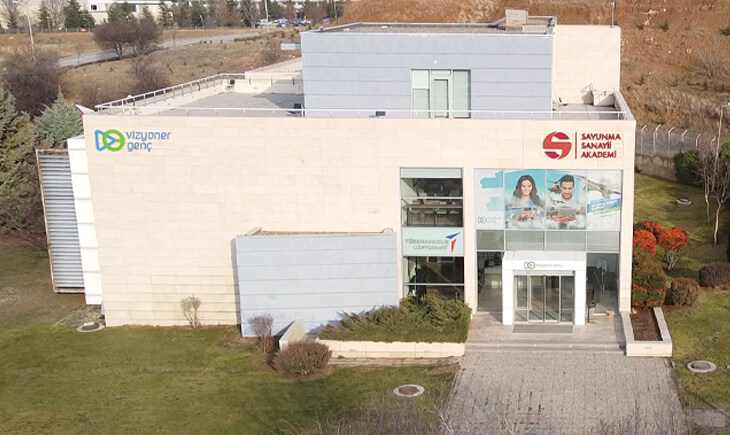
Savunma Sanayii Akademi
Üniversiteler Mahallesi ODTÜ TEKNOKENT, 06800, Çankaya/Ankara/Türkiye
+90 312 424 19 62
akademi@ssb.gov.tr